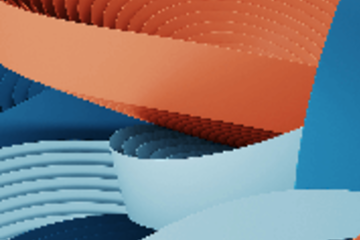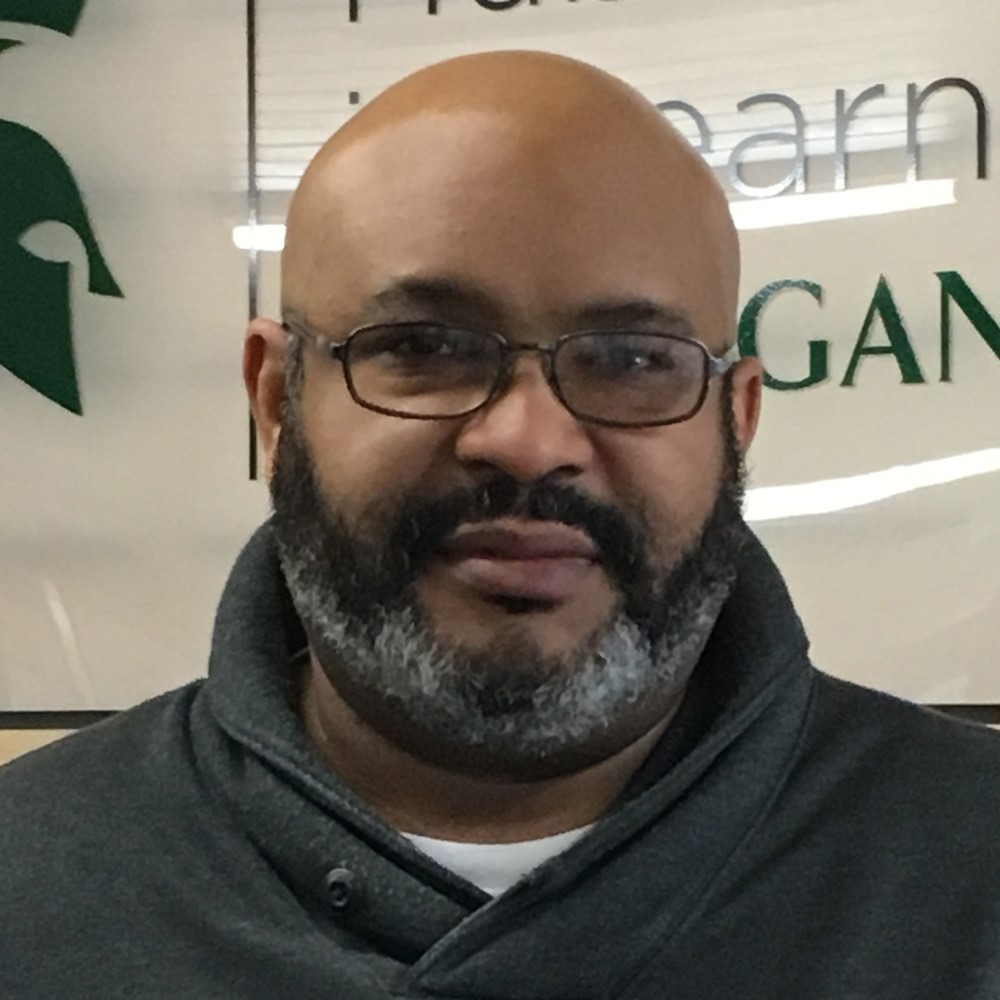Browse
Incorporating Technologies
Posted on: #iteachmsu


Digest
Posted by:
Thursday, Apr 15, 2021
Posted on: #iteachmsu

Predictive Analytics
Predictive Analytics use statistical models to analyze current and historical data for forecasting (predictions) about future or otherwise unknown events. In business, predictive analytics is used to identify risks and opportunities that aid in decision-making.
Posted by:
Rohit 936 shinde
Posted on: #iteachmsu

Predictive Analytics
Predictive Analytics use statistical models to analyze current and historical data for forecasting (predictions) about future or otherwise unknown events. In business, predictive analytics is used to identify risks and opportunities that aid in decision-making.
Posted by:
Wednesday, Apr 14, 2021
Posted on: #iteachmsu

ADHD and School interventions
Interventions must be based upon assessment data that includes information about the student’s strengths and needs as well as the environmental conditions in which her characteristics of ADHD occur. Progress monitoring and strategy adjustments are critical to the success of any intervention plan (Wolraich & DuPaul, 2010).The first step in creating classroom supports for students with ADHD is understanding thestudents’ strengths and needs. This involves formal and informal assessment, as well ascollaboration among educational professionals and the students’ families. If a student is not responsive to behavioral strategies and interventions, more intensive interventions, such as functional behavior assessment and behavior intervention plans, should be considered (see Practical FBA).
Authored by:
Wolraich & DuPau

Posted on: #iteachmsu


ADHD and School interventions
Interventions must be based upon assessment data that includes info...
Authored by:
Thursday, Apr 1, 2021
Posted on: #iteachmsu

Learning Units
Before youth can be accepted as important players in school decision making, the concept of student voice must gain acceptance among powerful stakeholders in the school. Using social movement theory as a lens, this article examines the consequences of positioning a student voice effort inside or outside of school walls.
Authored by:
Admin

Posted on: #iteachmsu


Learning Units
Before youth can be accepted as important players in school decisio...
Authored by:
Tuesday, Mar 16, 2021
Posted on: #iteachmsu

Test Technology Article
Test description
https://www.google.com/search?q=google&oq=google&aqs=chrome.0.0i131i433i457j0i433j69i59j0i131i433j69i60l4.1529j0j1&sourceid=chrome&ie=UTF-8
https://www.google.com/search?q=google&oq=google&aqs=chrome.0.0i131i433i457j0i433j69i59j0i131i433j69i60l4.1529j0j1&sourceid=chrome&ie=UTF-8
Authored by:
Kaileigh

Posted on: #iteachmsu


Test Technology Article
Test description
https://www.google.com/search?q=google&oq=goog...
https://www.google.com/search?q=google&oq=goog...
Authored by:
Monday, Jan 4, 2021
Posted on: #iteachmsu

Communication to Support Student Learning in a Digital Learning Environment
Educator provides evidence of their understanding of communication and outlines and provides evidence of a lesson that uses technology to support students’ use of communication in learning.
Method Components
What are the 4Cs?
The 4Cs for 21st century learning are Creativity, Critical Thinking, Communication, and Collaboration. They are part of the framework for 21st Century Learning and are designed to support student learning in today’s world and are skills they can use in college and career.
What is communication (and what isn’t it)?
The P21 framework emphasizes effective use of oral, written, and nonverbal communication skills for multiple purposes (e.g., to inform, instruct, motivate, persuade, and share ideas). It also focuses on effective listening, using technology to communicate, and being able to evaluate the effectiveness of communication efforts—all within diverse contexts (adapted from P21). Note that working in partners is a great way to collaborate or build shared understanding but a critical part of communication is sharing with an authentic audience.
Example strategies that use technology to support communication in the classroom:
Host a TED-style conference or showcases for your students to present original ideas on a topic of interest to them to an authentic, external audience. Record and post the videos to a youtube stream.
Provide opportunities to listen and ask questions through back channel tools like Today’s Meet or even Twitter.
Have your students publish their work through blogs, by creating websites, and by building other online resources that are shared with authentic audiences.
For other ideas see the resources below.
Method Components
What are the 4Cs?
The 4Cs for 21st century learning are Creativity, Critical Thinking, Communication, and Collaboration. They are part of the framework for 21st Century Learning and are designed to support student learning in today’s world and are skills they can use in college and career.
What is communication (and what isn’t it)?
The P21 framework emphasizes effective use of oral, written, and nonverbal communication skills for multiple purposes (e.g., to inform, instruct, motivate, persuade, and share ideas). It also focuses on effective listening, using technology to communicate, and being able to evaluate the effectiveness of communication efforts—all within diverse contexts (adapted from P21). Note that working in partners is a great way to collaborate or build shared understanding but a critical part of communication is sharing with an authentic audience.
Example strategies that use technology to support communication in the classroom:
Host a TED-style conference or showcases for your students to present original ideas on a topic of interest to them to an authentic, external audience. Record and post the videos to a youtube stream.
Provide opportunities to listen and ask questions through back channel tools like Today’s Meet or even Twitter.
Have your students publish their work through blogs, by creating websites, and by building other online resources that are shared with authentic audiences.
For other ideas see the resources below.
Authored by:
NC sate

Posted on: #iteachmsu

The economic impact of COVID-19
https://www.google.com/search?q=Learning+Communities+are+Spaces+to+Explore+Ideas&rlz=1C5GCEA_enLK882LK883&oq=Learning+Communities+are+Spaces+to+Explore+Ideas+&aqs=chrome..69i57j69i59i450l7.218j0j15&sourceid=chrome&ie=UTF-8
The COVID-19 outbreak was triggered in December 2019 in the city of Wuhan, which is in the Hubei province of China. The virus continues to spread across the world. Although the epicentre of the outbreak was initially China, with reported cases either in China or in travellers from the country, cases now are being reported in many other countries. While some countries have been able to effectively treat reported cases, it is uncertain where and when new cases will emerge. Amidst the significant public health risk COVID-19 poses to the world, the World Health Organization (WHO) has declared a public health emergency of international concern to coordinate international responses to the disease. It is, however, currently debated whether COVID-19 could potentially escalate to a global pandemic. In a strongly connected and integrated world, the impacts of the disease beyond mortality (those who die) and morbidity (those who are unable to work for a period of time) has become apparent since the outbreak. Amidst the slowing down of the Chinese economy with interruptions to production, the functioning of global supply chains has been disrupted. Companies across the world, irrespective of size, that are dependent upon inputs from China have started experiencing contractions in production. Transport being limited and even restricted among countries has further slowed global economic activities. Most importantly, some panic among consumers and firms has distorted usual consumption patterns and created market anomalies. Global financial markets have also been responsive to the changes and global stock indices have plunged.
The COVID-19 outbreak was triggered in December 2019 in the city of Wuhan, which is in the Hubei province of China. The virus continues to spread across the world. Although the epicentre of the outbreak was initially China, with reported cases either in China or in travellers from the country, cases now are being reported in many other countries. While some countries have been able to effectively treat reported cases, it is uncertain where and when new cases will emerge. Amidst the significant public health risk COVID-19 poses to the world, the World Health Organization (WHO) has declared a public health emergency of international concern to coordinate international responses to the disease. It is, however, currently debated whether COVID-19 could potentially escalate to a global pandemic. In a strongly connected and integrated world, the impacts of the disease beyond mortality (those who die) and morbidity (those who are unable to work for a period of time) has become apparent since the outbreak. Amidst the slowing down of the Chinese economy with interruptions to production, the functioning of global supply chains has been disrupted. Companies across the world, irrespective of size, that are dependent upon inputs from China have started experiencing contractions in production. Transport being limited and even restricted among countries has further slowed global economic activities. Most importantly, some panic among consumers and firms has distorted usual consumption patterns and created market anomalies. Global financial markets have also been responsive to the changes and global stock indices have plunged.
Posted by:
Scarlet Ethan Edien

Posted on: #iteachmsu


The economic impact of COVID-19
https://www.google.com/search?q=Learning+Communities+are+Spaces+to+...
Posted by:
Tuesday, Dec 15, 2020
Posted on: #iteachmsu

Polishing methods for metals and alloys.
As before, the traditional abrasive polishing is not only widely used, but also is being improved. An optimization of polishing regimes (contact load, tool feed rate and reciprocating frequency) can significantly increase in the durability of titanium alloys by improving the surface stress state [1]. A theoretical model is proposed to optimize the regimes of the tool movement and prediction of the material removal profile [2]. The duration of mechanical polishing can be markedly reduced using a diamond coated tool deposited from the gaseous phase [3] including for polishing aluminium-silicon alloys [4]. An abrasive polishing of brass is also recommended with a gradual transition from wet regime to dry one which provides a removal of abrasive particles from the treated surface [5]. A new polishing method of zirconium dioxide enables to change in the rheological properties of the suspension [6].
Posted by:
Rohit 936 shinde

Posted on: #iteachmsu


Polishing methods for metals and alloys.
As before, the traditional abrasive polishing is not only widely us...
Posted by:
Friday, Dec 11, 2020


